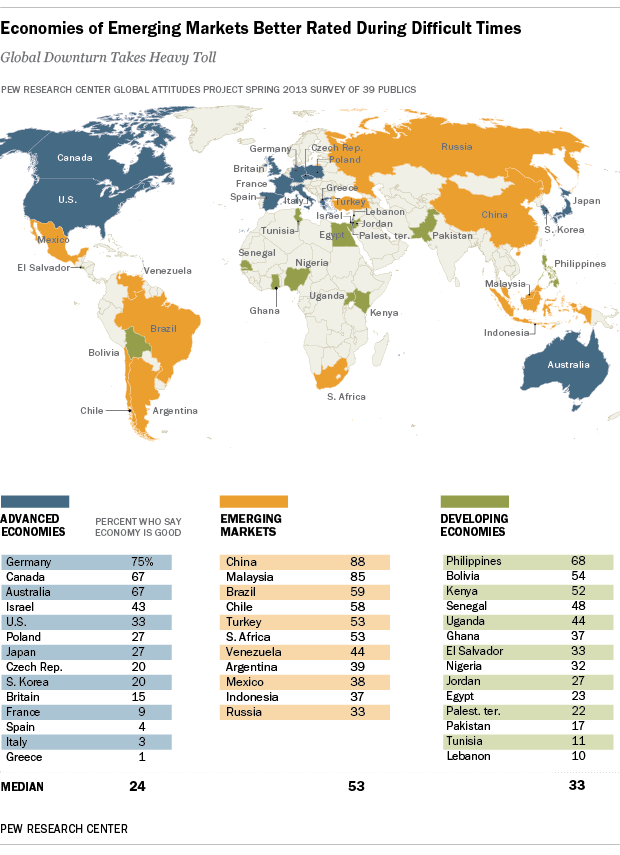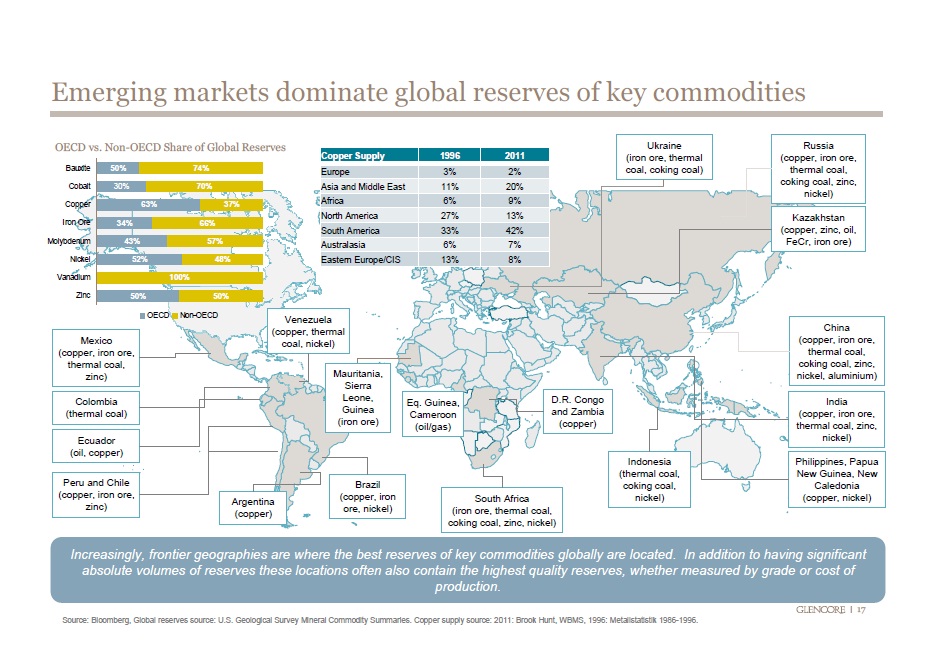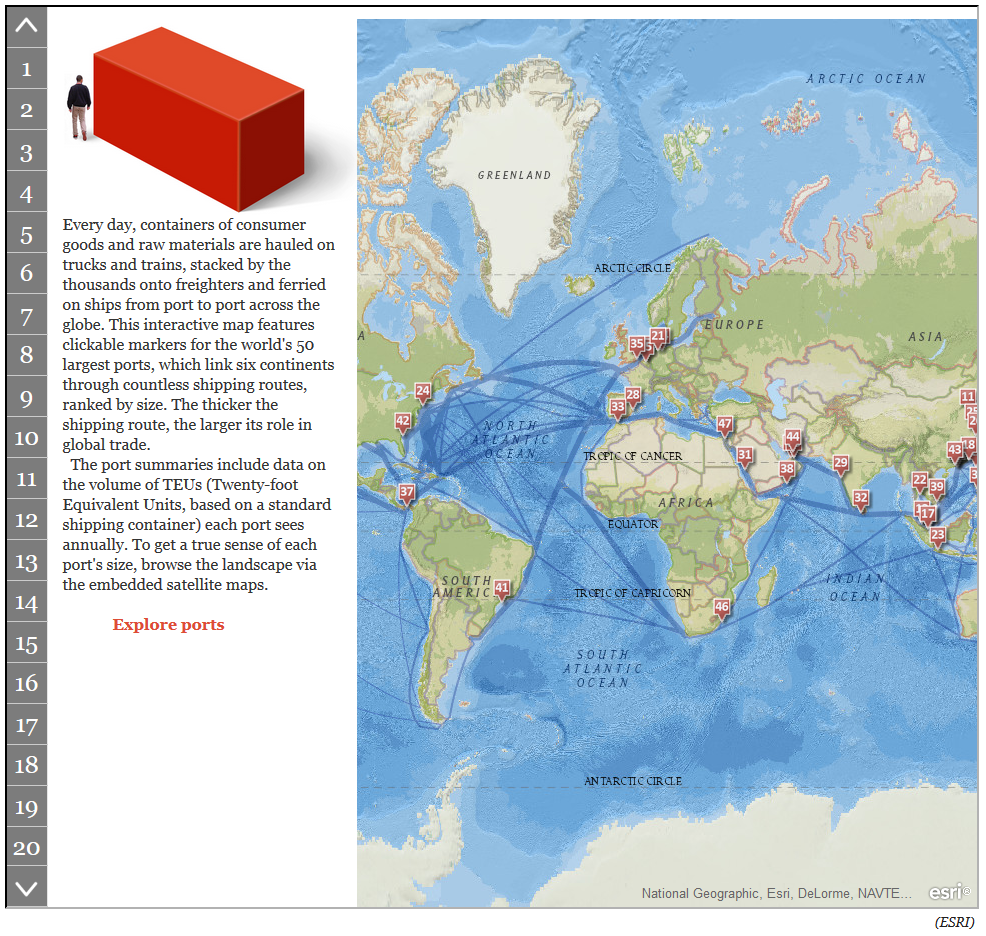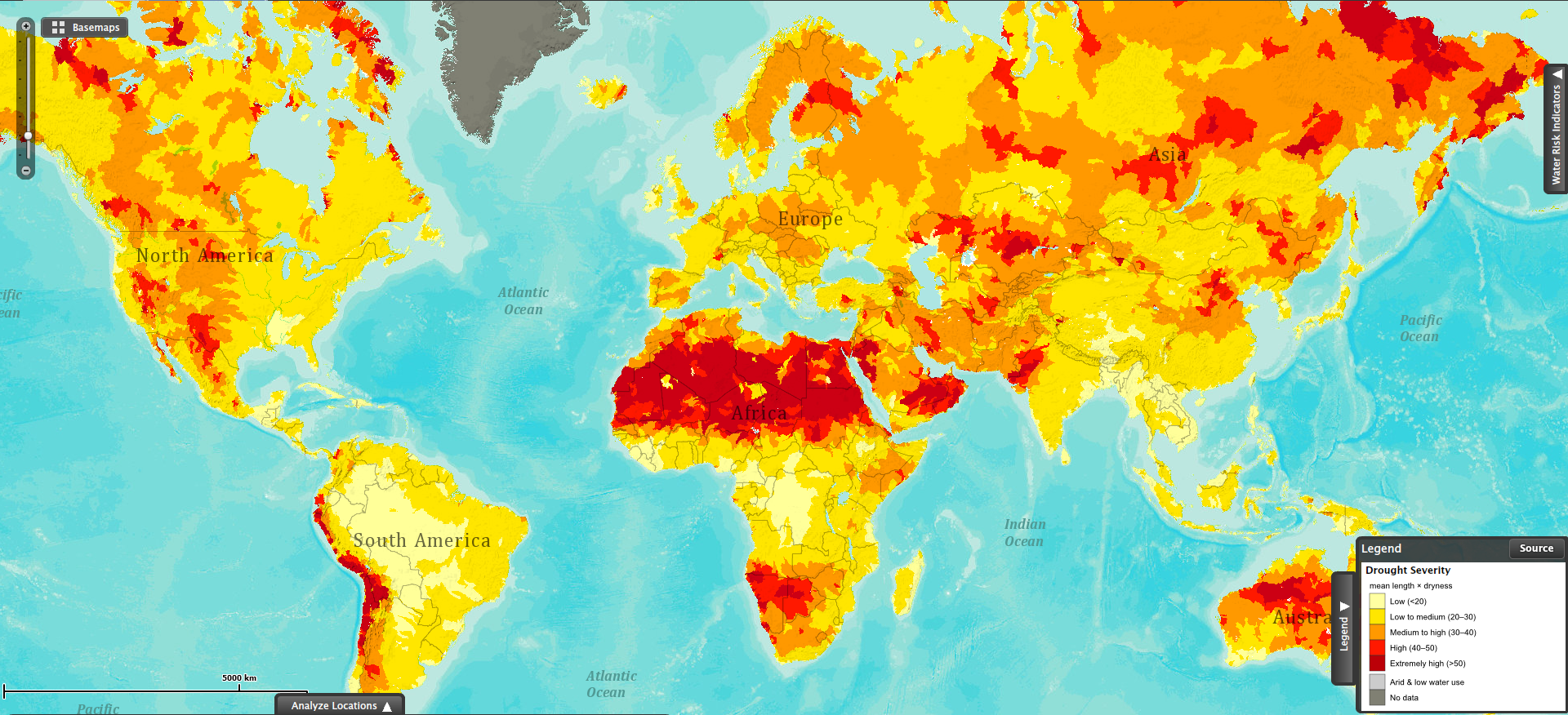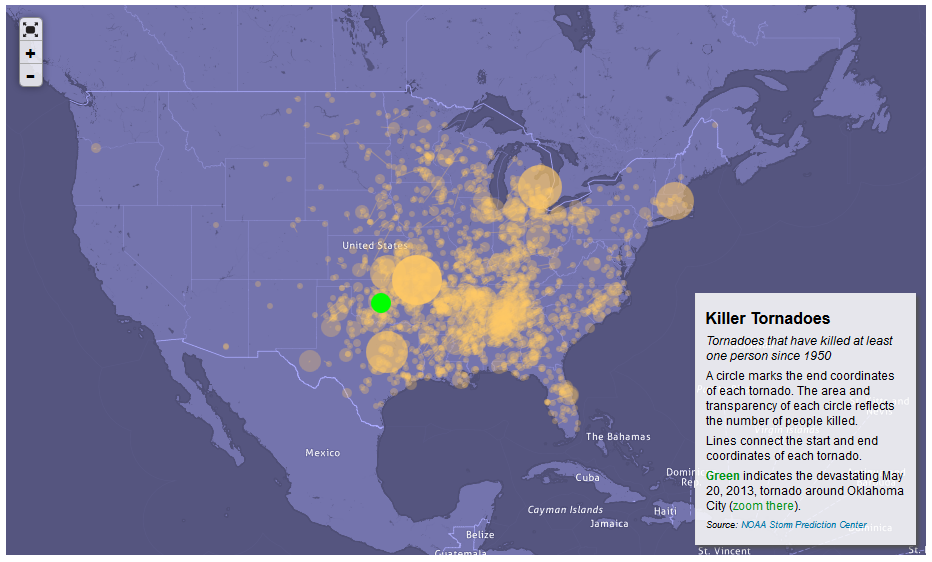 In lieu of the killer tornado that hit Oklahoma city on May 20, 2013, Slate published a map of the most devastating tornadoes to hit the United States since 1950.
In lieu of the killer tornado that hit Oklahoma city on May 20, 2013, Slate published a map of the most devastating tornadoes to hit the United States since 1950.
As seen in the map, the southwest is the region with the highest frequency of devastating tornadoes.
Source: Slate: Map of the Week: All Killer Tornadoes Since 1950
